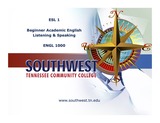
- Author:
- Rachel Mixson
- Margie Dernaika
- Linda Patterson
- Chris Hastings
- Janet Rosenthal
- Jessica Miller
- Date Added:
- 12/03/2021


Introduction of past tense and past progressive tense for beginning level academic English.

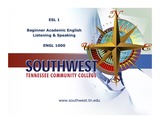

This is an Open Educational Resource created by University College Groningen (The Netherlands) students taking the course Biopsychology in Spring 2021.
In small teams, students were tasked with creating, composing, and curating an online portfolio dedicated to an interdisciplinary exploration of a topic of their choice. Their portfolio needed to be grounded in neuroscience, incorporate peer-reviewed research, and propose active learning exercises for future students and viewers.
Included topics:
- A trip through the world of psychedelics
- Alzheimer's disease
- Animal minds
- Biopsychological aspects of sexuality
- Consciousness
- Go with the flow: an interdisciplinary exploration of the flow state
- Happiness and well-being
- Hypnosis
- Intergenerational trauma
- Lucid dreaming
- Machine learning for mind reading
- Social and cultural neuroscience of prejudice
- Our sense of self
- Out of body experiences
- You and aesthetics
Please enjoy exploring their work!
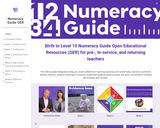
This OER has been designed to help pre-, in- and returning teachers build confidence in teaching numeracy and mathematics, become a proficient teacher, improve students' learning of numeracy, implement evidence-based practice, and work successfully in building partnerships with families.
This OER was conceptualised and designed by Dr Leicha Bragg (Deakin University) and Professor Chris Walsh (Victoria University) through funding provided by the Victoria State Government's Department of Education and Training (DET).
The Birth to Level 10 Numeracy Guide assists educators and families in learning about and supporting numeracy development across the curriculum from Birth to Level 10 using a practical set of resources. The Guide is available here: http://numeracyguidedet.global2.vic.edu.au/
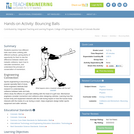
Students examine how different balls react when colliding with different surfaces, giving plenty of opportunity for them to see the difference between elastic and inelastic collisions, learn how to calculate momentum, and understand the principle of conservation of momentum.
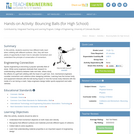
In this activity, students examine how different balls react when colliding with different surfaces. Also, they will have plenty of opportunity to learn how to calculate momentum and understand the principle of conservation of momentum.
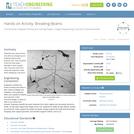
Students learn about stress and strain by designing and building beams using polymer clay. They compete to find the best beam strength to beam weight ratio, and learn about the trade-offs engineers make when designing a structure.
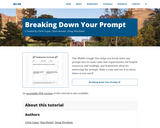
This fillable Google Doc helps you break down any prompt into its main tasks and requirements, list helpful resources and readings, and brainstorm ideas for answering the prompt. Make a copy and use it as many times as you need!
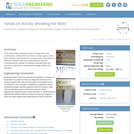
In this math activity, students conduct a strength test using modeling clay, creating their own stress vs. strain graphs, which they compare to typical steel and concrete graphs. They learn the difference between brittle and ductile materials and how understanding the strength of materials, especially steel and concrete, is important for engineers who design bridges and structures.
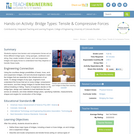
Students explore how tension and compression forces act on three different bridge types. Using sponges, cardboard and string, they create models of beam, arch and suspension bridges and apply forces to understand how they disperse or transfer these loads.
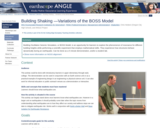
Building Oscillation Seismic Simulation, or BOSS, is an opportunity for learners to explore the phenomenon of resonance for different building heights while performing a scientific experiment that employs mathematical skills. They experience how structures behave dynamically during an earthquake.
(Note: this resource was added to OER Commons as part of a batch upload of over 2,200 records. If you notice an issue with the quality of the metadata, please let us know by using the 'report' button and we will flag it for consideration.)
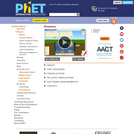
When will objects float and when will they sink? Learn how buoyancy works with blocks. Arrows show the applied forces, and you can modify the properties of the blocks and the fluid.
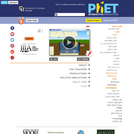
When will objects float and when will they sink? Learn how buoyancy works with blocks. Arrows show the applied forces, and you can modify the properties of the blocks and the fluid.
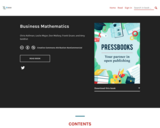
Word Count: 82950
(Note: This resource's metadata has been created automatically by reformatting and/or combining the information that the author initially provided as part of a bulk import process.)
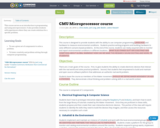
This course serves as an introduction to programming and using microprocessors. It also provides students with experiences where they can create solutions for a specific problem.

As Conewago Valley School District advances its open educational resource (OER) adoption and implementation plan, Leveraging its teaching and learning network and digital library, OER Commons (oercommons.org) launched in 2007.
This is the first of three custom module trainings that will provide participants with an introduction to OER practice and the value add, highlighting successful state and district use cases. Followed by a demonstration and discussion of how to navigate OER Commons and create collaborative workflows to identify resources, assess their quality using rubrics, and organize materials for use. Participants will get an opportunity to practice using OER tools and begin to design their plans for OER implementation, specific to their immediate OER needs. An important outcome for educators will be a shared understanding of OER practice and specific next steps for OER adoption in their work.
We have designed these modules to first spark the learner's interest in the topics covered and then dig deeper into the content through presentations, storytelling, and demonstrations of the tools. We will offer opportunities for learners to practice exploring the resources and tools, and reflect on how they might use them in their work.

Calculus is about the very large, the very small, and how things change—the surprise is that something seemingly so abstract ends up explaining the real world.
This course is a first and friendly introduction to calculus, suitable for someone who has never seen the subject before, or for someone who has seen some calculus but wants to review the concepts and practice applying those concepts to solve problems. One learns calculus by doing calculus, and so this course is based around doing practice problems.
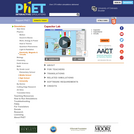
Explore how a capacitor works! Change the size of the plates and add a dielectric to see how it affects capacitance. Change the voltage and see charges built up on the plates. Shows the electric field in the capacitor. Measure voltage and electric field.